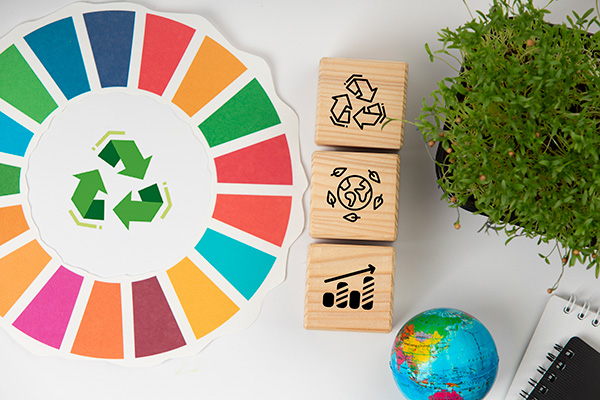19 June 2024 |
The circular economy in companies
The circular economy has become a fundamental strategy for companies that prioritize sustainability. This model promotes reuse, recycling and waste reduction, benefiting the environment and adding value to the companies that adopt it.
Many companies incorporate this approach to improve their sustainability and efficiency. Unilever is a prominent example, with its commitment to make all its packaging recyclable, reusable or compostable by 2025. In addition, the company has implemented the zero-waste-to-landfill initiative, which eliminates food waste and other non-hazardous waste from its operations.
Other companies follow this path, reusing resources, optimizing production to reduce waste, and encouraging recycling and reuse among their consumers and suppliers.
Adopting a circular economy system brings important benefits to companies:
- Decreases costs associated with waste management and the purchase of new materials.
- Consolidates a sustainable brand reputation that improves its positioning in the market.
- It drives innovation, as companies research new ways to reuse materials and design more sustainable products.
- Prepares companies to comply with environmental regulations and for a future where sustainability is decisive for business success.
What are the key concepts of the circular economy from a business perspective?
- Prevention of waste generation: avoid it at the source.
- Reuse: Extending the life of products through repair and refurbishment.
- Recycling: transforming waste into new resources or products, closing the life cycle of materials.
- Sustainable design: devising products with their full life cycle in mind to minimise waste generation from the initial design phase.
- Innovation in materials: developing and using recyclable and biodegradable materials to reduce dependence on non-renewable natural resources.
- Closing the cycle: integrating waste from one production phase as a resource for another, optimising efficiency.
- Resource efficiency: using resources more effectively and responsibly to maximize their value and reduce waste.
- Industrial symbiosis: promoting collaboration between companies to convert waste from one into resources for another.


